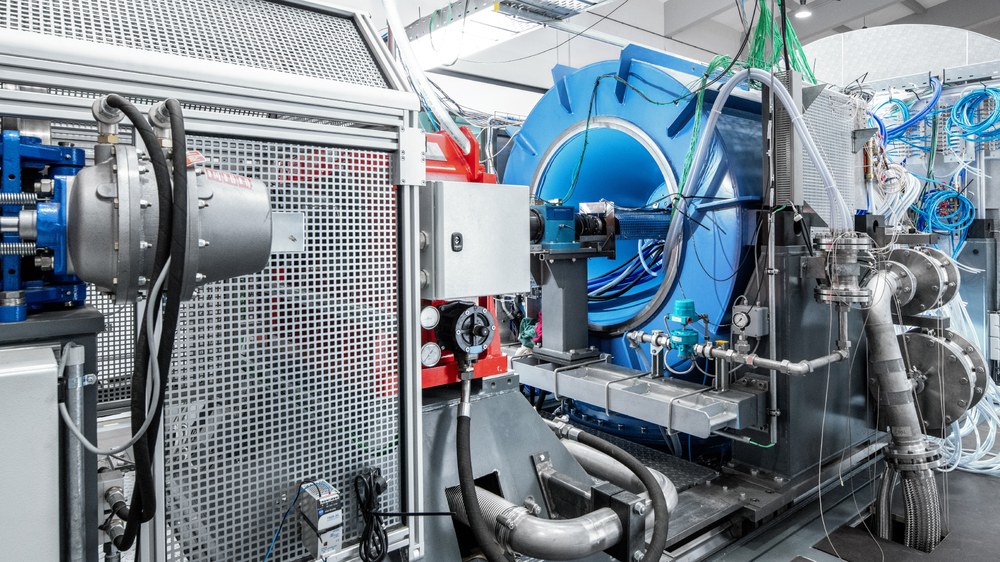The Next Generation Turbine (NG-Turb) test facility can be used to set key flow parameters at transonic Mach and realistic Reynolds numbers for research into load-flexible aero and power turbines. Depending on the application, single or twin-shaft turbine configurations can be installed, such as a combination of high and low pressure turbines.
In addition, combustor simulators can be used to analyse the interaction between combustor and turbine. To validate different cooling concepts, the supply can be adjusted through ten separate cooling air ducts. Typical turbine setups have several thousand measurement points to characterise the turbine flow. Measurement techniques such as pressure, temperature and multi-hole probes are used for both steady-state and time-resolved measurements. Innovative optical measurement techniques such as Raman spectroscopy, particle image velocimetry or infrared are also used.

Characteristics of the test bed
Technology Readiness Level 4-6
Closed circuit
Single- or twin-shaft turbine configurations
High operational flexibility
Dryer system and cooling air compressor
Ten adjustable cooling air ducts
Research topics
High, medium or low pressure turbines (co-current and counter-current)
Combustion chamber-turbine interaction for the combustion of hydrogen and conventional fuels
Gas and steam turbines for power generation
Air cooling and timing effects
Technical Data
Main channel | Cooling air supply | |
|---|---|---|
Inlet pressure | 15-195 kPa | 150-450 kPa |
Inlet temperature | 290-540 K | 263-320 K |
Air mass flow | < 10 kg/s | < 2 kg/s |
Pressure ratio | < 12 | < 4 |
Compressor capacity | 3700 kW | 450 kW |
Reynolds number | 0,1-1 Mio. |

